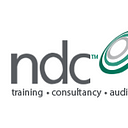5 Ways to Successfully Implement QHSE Management System

QHSE or Quality, Health, Safety, and Environment management system aims at building health and safety arrangements that are compatible with all places of work. Many managers have understood its prominence and have managed to create an impressive QHSE system for their organizations. However, a significant group of managers still struggle to even get the essentials right. Below are five beneficial ways in which managers can implement an effective QHSE system in their respective corporations.
- Generating and Implementing the Right Strategy
Creating a QHSE strategy that adheres and links to the company’s overall strategic direction is eminent for the successful implementation of the QHSE system. Additionally, working in accordance with the company’s strategy directly increases the probability of success. With an effective strategy in force, managers don’t have to constantly guard their positions or persuade the upper management teams of the advantages of the QHSE strategy.
While connecting the management system to the organizational strategy is an obvious step, surprisingly many managers are unable to answer rudimentary questions regarding the same. They must be able to provide answers to questions like, “What is the purpose of implementing the QHSE system?” or “Where do you see the system in one year’s time?” If a QHSE manager is unable to do so, then it is evident that there is no effective system in force.
2. Emphasis on the Important Organizational Risks
Managers usually have multiple spreadsheets focusing on the important tasks to complete; however, they often overlook the importance of concentrating on the risk factors as well. Emphasising on critical risk elements of business ensures that the resources are distributed effectively as well as efficiently. It means that all the risks are mitigated, which in turn, ensures that the working environment of the company is not harmed.
For a prolific HSE management system, it is imperative that managers also focus on the elements that might affect the system negatively or bring inconsistency to the organization.
3. Communication is Fundamental
Once the system is implemented, it is vital to get the feedback of the same. It is also important to be attentive to the factors that are not working in the system. Managers have to leave their desks and go around and communicate with their teammates about the functioning of the new system. Don’t filter out the bad comments, rather see them as an opportunity to improve and set up a better and more productive system in the future.
4. Regular Internal Audits and Reviews
Internal audits and management reviews are two critical elements that ensure effective QHSE management system in the company. Furthermore, these aspects measure how efficiently the QHSE system is operating. Managers must conduct regular internal audits and management reviews to analyze the growth and successful implementation of the system.
5. Constant Learning and Sharing
Managers must be updated with the new trends in the compliance industry. Join industrial agencies and communicate with the regulatory bodies to learn and be aware of the trends and technologies of the industry. And the work doesn’t stop with just learning; sharing those learnings also play an imperative role in this process. Social media is a great platform to learn and engage with industry. QHSE managers should benefit from these platforms by sharing their personal experiences and also learning from their counterparts, thereby, growing as a community.
An effective QHSE management system requires a strong strategy, tactical implementation, and consistent reviewing to ensure that the work environment remains industrious. Managers must upgrade the QHSE system with the changing times and trends in order to create a strong, flexible, and updated working environment.
